Bjorn Stevens
| Department | Climate Physics |
| Group | Climate Physics Coordination |
| Position | Director |
| phone | +49 40 41173-421 |
| bjorn.stevens@mpimet.mpg.de | |
| Room | B 414 |
About my research
I am interested in how atmospheric water vapor, and clouds, shape climate — globally and regionally. Understanding how turbulent mixing and cloud microphysical processes influence cloud amount are instrumental in quantifying how clouds respond to warming, and how radiative forcing responds to aerosol perturbations.
My research has identified different ways in which clouds organize themselves, how varied processes — such as precipitation, air sea interaction, and radiative cooling — influence this organization, and how clouds couple to larger-scale circulation systems to help determine the pattern of climate change. These interests have led me to advance observational techniques and to expand the frontiers of simulation science to develop and test theories developed by himself and others.
Biography
Publications
Teaching
I offer a graduate seminar on different topics (see below) at the University of Hamburg. Lectures are usually related to my research interests, which invariably link to clouds and climate processes. Each year, in the summer semester, I offer a block course on ‘An introduction to Earth System Modelling’.
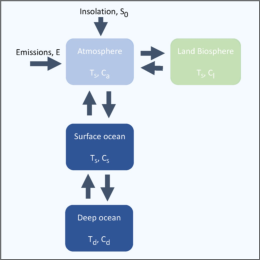
Introduction to Earth System Modelling – Summer semester (with Victor Brovkin)
In this course we introduce the main components of the Earth system, components that regulate matter and energy flows in ways that determine Earth’s climate. Based on an understanding of the essential contributions of these varied components the students develop and explore the dynamics of the simplest possible earth-system model.
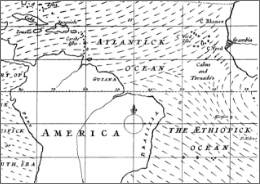
The Trades – Winter 2020/2021
The Trades are one of the major wind systems of the general circulation of Earth’s atmosphere, and as such play an important role in the climate system. In this courseI will describe what we observe about the trade winds, the theories we use to interpret or explain these observations, and the puzzles that remain.
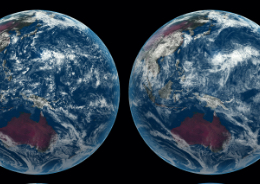
Global Circulation and Climate - Winter 2019/2020
The course will explore the interactions between circulation and climate through through the perspective of selected and long-standing biases in Earth System Models. Six different biases are selected (syllabus), and used to develop the conceptual foundations of climate modelling. The class is co-taught with Hauke Schmidt.
T1: Stratocumulus (slides); T2: Tropical Thermal structure (slides); T3: Deep Convection and Tropical SSTs (slides); T4: The Meridional Overturning Circulation; T5: Stratospheric temperature bias (slides)
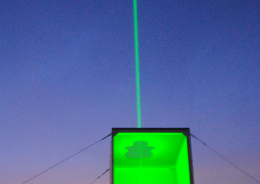
Principles of active radar and lidar remote sensing - Winter 2017/2018
The course will introduce the principles of active radar and lidar remote sensing, with a focus on clouds, water vapor and aerosol. Synergistic uses of radar and lidar so as to infer cloud microphysical properties will also be introduced. An effort will be made to provide students with hands on experience with radar and lidar data and data processing.

The Atlantic ITCZ - Winter 2016/2017
The lectures will review basic concepts in tropical dynamics (moist thermodynamics, convective parameterization basics, weak-temperature gradient approximations, equatorial waves) and then proceed to circulation systems (MJO, Hadley/Walker Cells, land=sea circulations, Monsoons, and maybe even a tropical cyclone appetizer). It will be a mix of reading selected papers from the literature and prepared lectures.
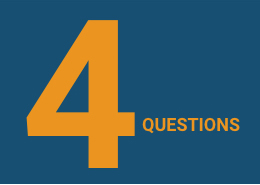
Clouds, Circulation and Climate Sensitivity - Winter 2014/2015
This class well develop and explore the Four Questions (of the WCRP Grand Science Challenge on Clouds Circulation and Climate Sensitivity) : (i) What controls the position, strength and variability of storm tracks? (ii) What controls the position, strength and variability of the tropical rain belts? (iii) What role does convection play in cloud feedbacks? (iv) What role does convective aggregation play in climate?

A Climate System View of Radiative Transfer - Winter 2013/2014
These lectures explores how basic concepts in radiative transfer, like Wien's displacement law, the absorption spectrum of simple molecules, line broadening and continnum emission, help set basic properties of Earth's atmosphere. Radiative-convective equilibirum is introduced and developed as a basis for exploring the forcing-feedback-response framework, and related diagnostic tools, for understanding climate change. A particular focus will be on the interactions of cloud and radiation and and elucidation of their ultimate importance for basic properties of the climate system.
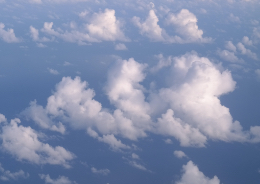
A Climate System View of Clouds and Convection - Winter 2011/2012
These lectures explore the climate and climate dynamics of cloudy atmospheres. Different ways clouds and convective processes contribute to the state and changes in the climate system are reviewed. Topics include: the energy budgets of the top of the atmosphere and the surface, and the effects of clouds on these budgets, and controls on surface temperature. Concepts related to cloud and aerosol effects, forcing, feedbacks, and adjustments to climate perturbations will also be introduced and developed.
Lectures notes | Slides

Cloud (and Aerosol) Physics - Winter 2010/2011
These lectures present a description of the thermodynamic and microphysical laws that govern the microphysical structure of clouds and precipitation. In addition to reviewing the elements of cloud (and aerosol) microphysics this course reviews the different types of models that have been developed to describe such processes; basic measurement techniques, including remote sensing; and some of the important outstanding questions. The course is taught at an advanced undergraduate level and lectures are given in German.
Lectures notes
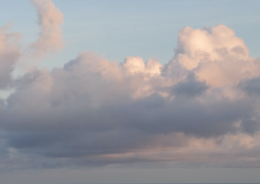
Atmospheric Moist Convection - Winter 2009/2010
This course (15 lectures of about 2 hrs each) will give an introduction and overview to the structure and theory of atmospheric moist convection. My focus will be to develop our theoretical understanding of this class of atmospheric phenomena, particularly as it relates to the structure and sensitivity of the climate system. The intended audience is Masters or PhD level students, certainly those that have a basic understanding of meteorological concepts and atmospheric thermodynamics. A goal will be to develop the basis for students to pursue PhD research on interesting questions pertaining to atmospheric moist convection and its role in the climate system.
Slides
Videos about Prof Stevens' research
Curiosity Meets Discovery
Learn what amazing discoveries are coming out of Max Planck Institutes around the world in the lecture series “Curiosity Meets Discovery” by the Max Planck Institute for Neuroscience in Florida. It was our turn on 16 December 2021, and Prof. Bjorn Stevens held a talk about “Understanding Climate Science”. He will take you through new exa-scale computing resources that are enabling new climate simulation tools.
Video from: 2021-12-16
Faster Faster — machine learning our way to a new generation of storm-resolving Earth system models
Exa-scale computing is enabling Earth-system models with greatly increased physical fidelity. These advances come at considerable computational cost. Machine learning, through its ability to efficiently identify, extract, and manipulate the information content of this new generation of models, can contribute to efforts to use these new models most effectively, advancing methods that may also generalize to a larger class of problems.
Presentation by Bjorn Stevens in the framework of the "AI for Good: Accelerating Climate Science with AI" event series hosted by ITU, the United Nations specialized agency for information and communication technologies.
Video from: 2021-09-08
Clouds, Circulation and Climate Sensitivity — EUREC4A!
As part of the Hamburg KlimaCampus Colloquium series, Prof. Bjorn Stevens presents the science behind EUREC4A, a Barbadian-German-French led field campaign, its execution, and some snapshots of results emerging less than one year since the campaign's conclusion.
Video from: 2021-02-04
Climate factor clouds — the field campaign EUREC4A intends to answer one of climate science’s great mysteries
From 20 January through 20 February 2020, the EUREC4A (Elucidating the role of clouds-circulation coupling in climate) field study investigated trade wind clouds in the Tropical Atlantic. The international field study aimed at advancing understanding of the interplay between clouds, convection and circulation and their role in climate change. It was led by Prof Bjorn Stevens and Dr Sandrine Bony (Director of Research at the Laboratoire de Météorologie Dynamique). Their initiative builds on, and extends, a decade of cooperation with Barbadian scientists at the Caribbean Institute for Meteorology and Hydrology, under the leadership of its Principal, Dr David Farrell.
Photography: Iulian Fortuna, Editing: Marius Léna. Compania Fortuna - 2020.
Video from: 2020-11-30
"Climate Science in the Age of Exascale" by Bjorn Stevens
With introduction by SC20 General Chair Christine E. Cuicchi, view the keynote talk at “SC20: The International Conference for High Performance Computing, Networking, Storage, and Analysis” featuring Professor Bjorn Stevens of the Max Planck Institute for Meteorology. Prof. Stevens discusses how exascale computing is impacting two opportunities that are changing the face of climate science. One arises from what exascale will enable; the other from what it will not.
Introduction: 00:00-08:22
Keynote talk by Prof. Stevens: 08:22-57:38
Video from: 2020-11-16
How Cloudy is the Earth?
This video by Prof. Bjorn Stevens sheds light on clouds and their significance for the climate. It has, at least up until now, generally been thought that patterns of cloudiness are controlled by large scale weather systems. Research by Prof. Stevens and his co-authors show how small and intermediate scales of motion substantially pattern fields, adding a new piece to the puzzle of cloud-controlling factors. © Bjorn B. Stevens & Latest Thinking. This work is licensed under CC-BY 4.0
Video from: 2020-04-26
To What Extent Do Aerosol Particles in the Atmosphere Mask the Effects of Greenhouse Gases?
Prof Bjorn Stevens is Director in the department "The Atmosphere in the Earth system" and speaks about his research and the question: To what extent do aerosol particles in the atmosphere mask the effects of greenhouse gases? © Latest Thinking GmbH
Video from: 2016-10-23
Watching Water
What is it about the mighty water molecule that makes it so important? Does an understanding of a few key facts about water help us to better understand our atmosphere, patterns of weather, climate and climate change? In his lecture at the New England Aquarium on 15.10.2015, Prof Bjorn Stevens, Director at Max Planck Institute for Meteorology, answered these questions.
Video from: 2015-10-15
